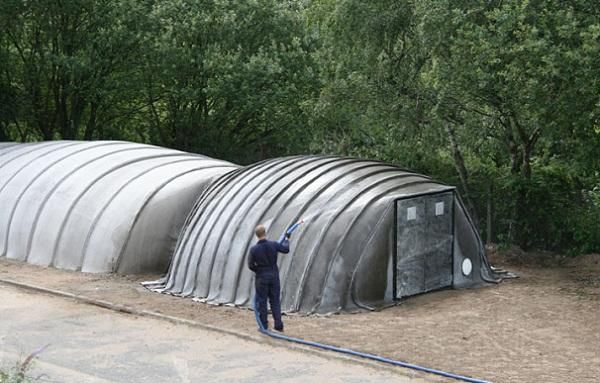Futuristic Materials Could Build Tornado-Proof Homes

When tornadoes tore across the Midwest this week, they set their fury against buildings made from the same wood, steel and concrete architectural components used to construct homes a hundred years ago. For those looking to rebuild, new classes of futuristic materials might be able to provide the resistance to weather disasters those century-old housing technologies could not.
Carbon fiber, long used for smaller items such as bicycles or eyeglasses, actually works as a robust building material, producing houses that possess both flexibility and durability. Concrete Cloth, a specially impregnated fabric that becomes ridged when water is added, could create reinforced shelters on the fly. And Kevlar, the material used in bulletproof vests, can just as easily protect people and homes from the flying debris that flies about during a twister attack. ″Carbon fiber is incredibly strong and very flexible. The thinking behind carbon fiber architecture is that it can withstand earthquakes. It would be more flexible in the wind than regular structures,″ said Bradley Quinn, author of the new book on advanced materials called ″Design Futures″ (Merrell Publishers, 2011). ″Then there′s the DuPont Storm Room. It′s like a tent made of metal mesh and Kevlar. It can be erected inside and protect the people from all the debris that flies around.″ Kevlar, metal mesh and carbon fibers all provide a flexibility that traditional materials such as wood or concrete simply cannot match. By bending with the wind instead of bending against it, houses constructed from more supple frames have a lower chance of collapse than the more rigid structures build today. There′s a new school of architecture devoted to designing softer buildings that integrate with, rather than resist, nature in both its calm and furious moods, Quinn said. However, futuristic materials and radical new architectural concepts come at a steep price. For residents of Joplin, Mo., many of whom suffered injury or death while living trailers or homes without storm cellars, a cheap solution like Concrete Cloth may prove more practical. Originally designed for building military bases, Concrete Cloth is a cement-impregnated fabric that works in the same way as a plaster cast, except on a larger scale. Giant rolls of the material spool the fabric out across uneven ground of hastily constructed frames. Spraying the material with water begins a chemical reaction that, after some drying, results in a low profile structure strong enough to resist whatever Mother Nature can throw at it, Quinn said. Concrete Cloth is easy enough to work with and cheap enough to provide communal shelters for the residents of trailer parks and houses without storm cellars. An even more radical school of architecture would move buildings out of the path of tornadoes entirely by placing them underground. Called ″subscrapers″ (as opposed to "skyscrapers"), these buildings move down into the Earth rather than up into the path of the storm, Quinn told InnovationNewsDaily.
This story was provided by InnovationNewsDaily, a sister site to LiveScience. Follow InnovationNewsDaily on Twitter @News_Innovation, or on Facebook.
Sign up for the Live Science daily newsletter now
Get the world’s most fascinating discoveries delivered straight to your inbox.













